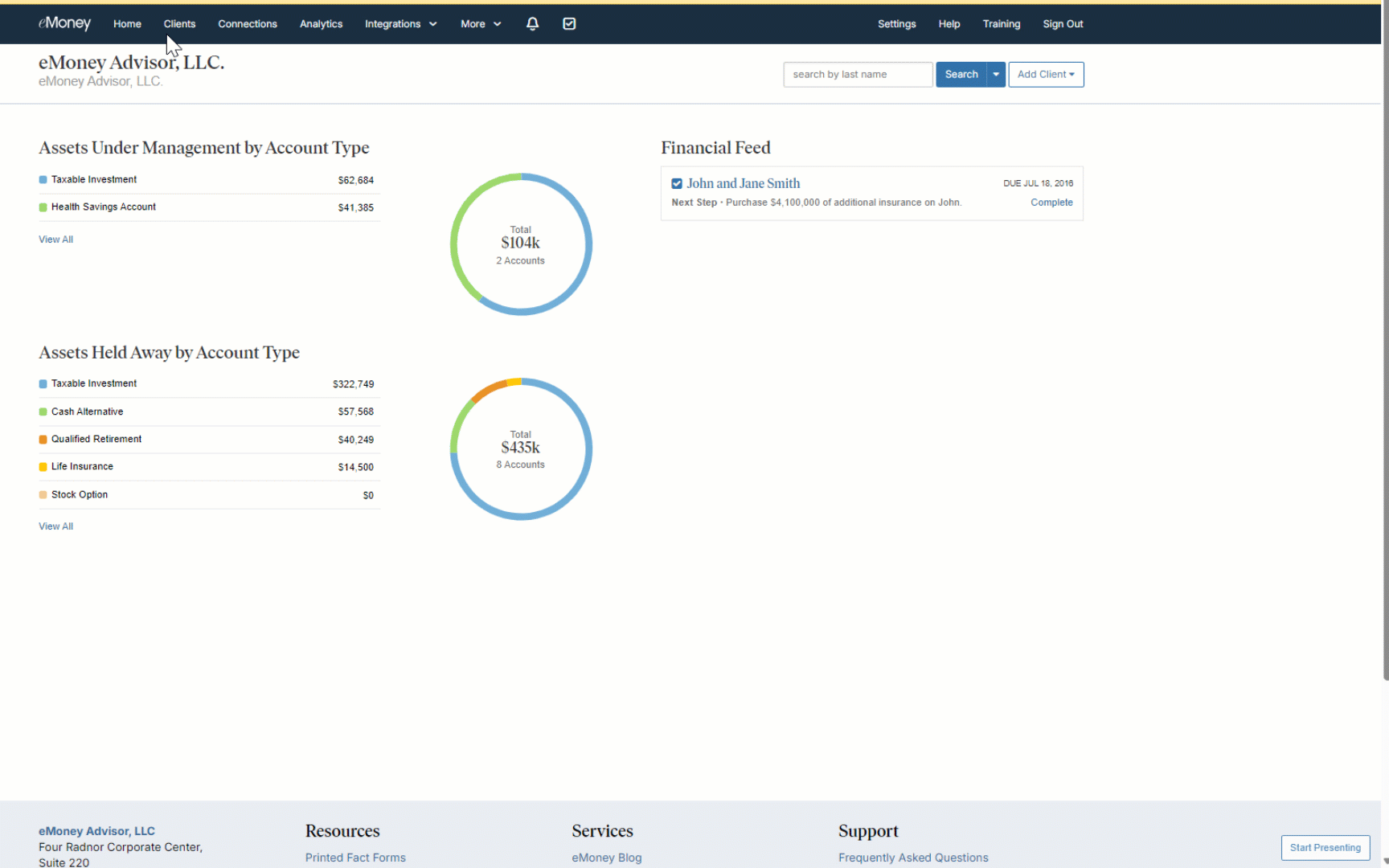
for expert insights on the most pressing topics financial professionals are facing today.
Learn MoreYou’re preparing for your first client meeting with new clients, Robert and Lily, and probably thinking about how you’ll use your time most efficiently to build trust, showcase your business value, and lay the foundation for a strong, collaborative relationship.
As you begin your meeting with Robert and Lily, whether in your office or virtually, start by switching your eMoney view to Present Mode. This essential step ensures you’re only sharing their information, reducing the risk of accidently displaying sensitive information from your other clients. It also helps Robert and Lilly focus on the session by reducing distractions.
To enter Present Mode, go to the clients’ Overview page and select Start Presenting on the bottom-right side of your screen.

Next, navigate to Basic Facts to dive deeper into understanding Robert and Lily’s financial situation. As you go through each category, confirm the data you’ve previously entered, such as their income, assets, and liabilities, and add any new information they provide during the conversation.
You might take note of Robert and Lily’s financial priorities and assure them that you can customize the plan to accommodate both Robert’s focus on early retirement and Lily’s focus on their children’s education. By doing this in real-time, you can demonstrate how customizable and collaborative the process can be!
Pro tip: After the meeting, offer to share the updated Basic Facts with Robert and Lily via the Vault. This allows them to review it at their leisure, reinforcing the value you provide as their advisor.
Now it’s time to introduce Robert and Lily to their Client Portal, highlighting the features they’ll have access to, such as tracking their financial goals and viewing their investment performance.
Encouraged Steps:
Finally, assign actions and next steps for Robert and Lily to ensure they stay engaged following your meeting.
To assign tasks, head over to Basic Facts > Observations and Next Steps > Add Next Step. Some example tasks include “Fill out the Fact Finder” and “Connect Your Bank Accounts.” Use due dates to help them stay on track.
In your meeting, let them know that these next steps will be visible when they log into the Client Portal, making it easy for them to follow up and stay organized.
By guiding clients like Robert and Lily through their first eMoney experience, you’re not just introducing them to a platform—you’re laying the groundwork for a long-term, collaborative relationship.
Each step, from turning on Present Mode to staying organized with Next Steps, reinforces your role as a trusted advisor and empowers your clients to take an active role in their financial future.
Additional Resources: